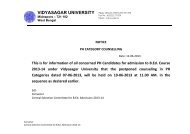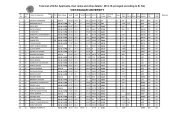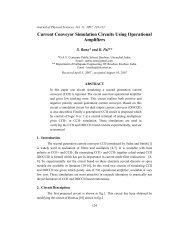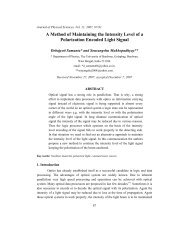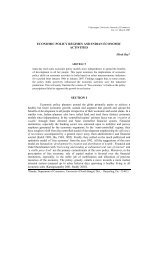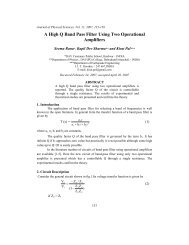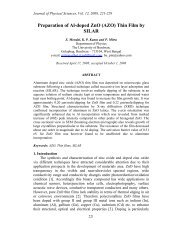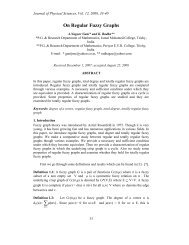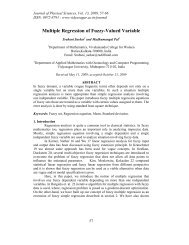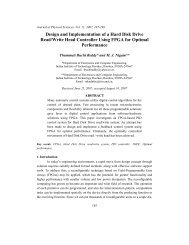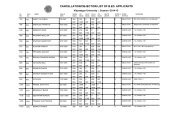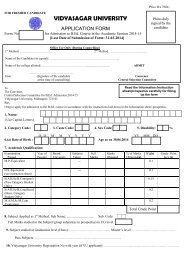VIDYASAGAR UNIVERSITY JOURNAL OF COMMERCE
VIDYASAGAR UNIVERSITY JOURNAL OF COMMERCE
VIDYASAGAR UNIVERSITY JOURNAL OF COMMERCE
Create successful ePaper yourself
Turn your PDF publications into a flip-book with our unique Google optimized e-Paper software.
A SURVEY ON THE RECAPITALISATION, MERGERS AND ACQUISITIONS <strong>OF</strong> THE NIGERIAN INSURANCE INDUSTRY<br />
Table- 23: The Insurance Industry is not ripe for a new round of recapitalization<br />
Response No. of respondents Percentage (%)<br />
Strongly Agree 1 1.85<br />
Agree 9 16.67<br />
Indifferent 11 20.37<br />
Disagree 19 35.19<br />
Strongly Disagree 14 25.93<br />
Total 54 100.00<br />
Table -24: There is a positive relationship between the level of capitalization<br />
and the level of development in the insurance industry<br />
Response No. of respondents Percentage (%)<br />
Strongly Agree 18 33.33<br />
Agree 20 37.04<br />
Indifferent 5 9.26<br />
Disagree 4 7.41<br />
Strongly Disagree 7 12.96<br />
Total 54 100.00<br />
Hypotheses testing<br />
The chi-square method of testing the goodness of fit was used by the researcher to test all<br />
carefully formulated hypotheses in section one. The degree of freedom (DF) of empirical<br />
chi-square (χ 2 ) is obtained using the formula:<br />
(r T - 1) (c T - 1)<br />
where r T = the row total, and c T = the column total<br />
Therefore, degree of freedom for the purpose of this paper is (5-1)(2-1) = 4.<br />
The expected frequency is computed using the formula:<br />
e = r T x c T<br />
G T<br />
Where r T = the total row, c T = the total column, and G T = the grand total which is the<br />
number of cases. While the chi-square (χ 2 - test) is given as: χ 2 = ∑ (O - E) 2<br />
Where O = observed frequencies, and E = expected frequencies.<br />
The degree of freedom (DF) is measured against 95% level of significance. This means that<br />
the critical ratio of 2.776 is obtained using the chi-square table while tracing the degree of<br />
freedom under the deviation value of 5% or q(0.05).<br />
Decision Rule: The decision rule under this study is as follows:<br />
(1) The hypothesis is accepted if the critical ratio (q) is greater than test at 5% statistics.<br />
(2) The hypothesis is rejected if test statistics (TS) is less than critical ratio (q) at 5% value.<br />
E<br />
48<br />
Vidyasagar University Journal of Commerce



